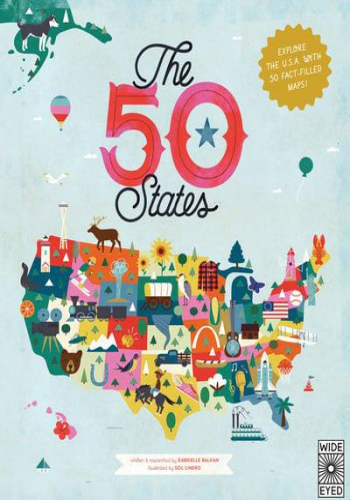In 51 charmingly illustrated infographic maps, explore every state of the USA from Alabama to Wyoming and the nation's capital to discover more than 2,000 facts that celebrate the people, cities, nature and historic events that have helped make America what it is today. You'll also get an expansive guide to the state flags and US presidents.
Ghost towns, swamp tours, the center of the universe… bacon donuts, brainy berries, salmon jerky… The French Fry King, The Mother of Oregon, The Queen of Blues… be inspired by the inventiveness, beauty and diversity of the United States in this curious collection of fact-filled maps.
On each wonderful map, find:
- A welcome box with a short introduction to the state
- Key facts, including the capital; state bird, flower and tree; and statehood order
- State icons celebrating the state's people, places and history
- Six inspiring people who have a connection to the state
- Region spotlight bubbles to allow you to discover more about one particular place
- A moments to remember box with a list of significant dates and their events in the state's history
Each state's map also contains information about which states it neighbors, its bodies of water and borders as well as where it is situated in the country. Did you know that while Hawaii shares its border with no one, both Missouri and Tennessee border eight other states? Many state parks, battlefields, national forests and reservations are also included to inspire you to respect and explore the great outdoors.
So pack your bags and say later 'gator… the great States await!
The 50 States series of books for young explorers celebrates the USA and the wider world with key facts and fun activities about the people, history and natural environments that make each location within them uniquely wonderful. Beautiful illustrations, maps and infographics bring the places to colourful life.
Also available from the series:50 Trailblazers of the 50 States, Only in America Activity Book, Only in California, Only in Texas, We Are the United States, 50 Adventures in the 50 States, and Only in America.







